You mentioned that "harmonic distortion" is an issue.
My measurements indicate that with a bandpass enclosure, harmonic distortion is certainly not an issue in its passband. In fact, that low HD can be a problem with BP builds because the acoustic bandpass can hide when the driver is being overdriven. Too many stories of bandpass subs that just stop working with no signs of stress beforehand ...
A "tapped horn:" IMO is basically a series-tuned BP design where the acoustic filtering capability is reduced for less power compression at higher volumes, making it a decent fit for pro audio use (with the right processing). With my POC builds, compression dropped from 2dB to 0.3dB around Fb using the same driver in a 50 Hz TL and then in a 40 Hz TH - the difference likely primarily caused by going from a 350 cm^2 to a 925 cm^2 "mouth".
The main distinguishing factor IMO is probably group delay across the passband, all else being equal. The audibility of that though is debatable, unless it's extreme, and of course the average listening room adds some gross changes to the response anyway. BTW, the same design "rules" apply to THs and BP builds, e.g. too high passband gain = narrow passband = worse GD. I try not to venture outside of a +/- 3dB window (wrt the driver's reference efficiency).
My measurements indicate that with a bandpass enclosure, harmonic distortion is certainly not an issue in its passband. In fact, that low HD can be a problem with BP builds because the acoustic bandpass can hide when the driver is being overdriven. Too many stories of bandpass subs that just stop working with no signs of stress beforehand ...
A "tapped horn:" IMO is basically a series-tuned BP design where the acoustic filtering capability is reduced for less power compression at higher volumes, making it a decent fit for pro audio use (with the right processing). With my POC builds, compression dropped from 2dB to 0.3dB around Fb using the same driver in a 50 Hz TL and then in a 40 Hz TH - the difference likely primarily caused by going from a 350 cm^2 to a 925 cm^2 "mouth".
The main distinguishing factor IMO is probably group delay across the passband, all else being equal. The audibility of that though is debatable, unless it's extreme, and of course the average listening room adds some gross changes to the response anyway. BTW, the same design "rules" apply to THs and BP builds, e.g. too high passband gain = narrow passband = worse GD. I try not to venture outside of a +/- 3dB window (wrt the driver's reference efficiency).
Started to manually design my folded tapered TL, and quickly realized that I need some help! Figured that MLTL3 spreadsheet was closest to what I wanted. Things went along pretty good until I tried to export the sim and got a VB run time error. Let me know if there are more details you need.

???? 'sweet set' for what?‘built a number of boxes using the same driver ‘. 👍🏼👍🏼 somebody gets it. Just gotta find the sweet set of TS parameters that will participate in that fairly
I mean speakers are designed based on its gain BW as defined by its Fs, mass corners, so as I showed Brian ages ago now when he claimed some driver's specs were no good for a BP4?/high Qt IIRC, it was just that the specs dictated it 'slide down' the driver's IB response curve till it gave a max flat BW alignment, i.e. 'horses for courses'.
May, may not have met the needs of the app, but it was a viable option per se.
That's one of the older workbooks that doesn't check to see if the information that you entered in the "Export Filename" cell is correct. Change it to "C:\Hornresp\Import\BOXPLAN.TXT", which should work if you've got Hornresp installed in the default location on your PC.Started to manually design my folded tapered TL, and quickly realized that I need some help! Figured that MLTL3 spreadsheet was closest to what I wanted. Things went along pretty good until I tried to export the sim and got a VB run time error. Let me know if there are more details you need.
View attachment 1140274
When it all works together it sure seems wonderful. XO region and beyond blends so well with the ‘next’ speaker???? 'sweet set' for what?
I mean speakers are designed based on its gain BW as defined by its Fs, mass corners, so as I showed Brian ages ago now when he claimed some driver's specs were no good for a BP4?/high Qt IIRC, it was just that the specs dictated it 'slide down' the driver's IB response curve till it gave a max flat BW alignment, i.e. 'horses for courses'.
May, may not have met the needs of the app, but it was a viable option per se.
Attachments
-
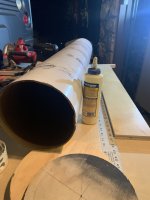 7AFEB247-4D6F-4247-BDB8-E7147B095CAA.jpeg307.5 KB · Views: 62
7AFEB247-4D6F-4247-BDB8-E7147B095CAA.jpeg307.5 KB · Views: 62 -
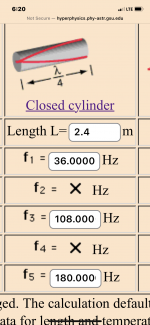 5B2E590A-F504-41AA-ABA6-977C7260BAEB.png71.2 KB · Views: 62
5B2E590A-F504-41AA-ABA6-977C7260BAEB.png71.2 KB · Views: 62 -
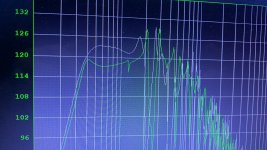 D5715C6E-2538-46C2-AA7C-5AD4BA374B44.jpeg607.8 KB · Views: 62
D5715C6E-2538-46C2-AA7C-5AD4BA374B44.jpeg607.8 KB · Views: 62 -
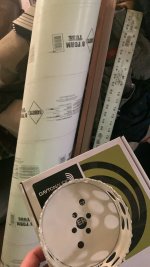 0D47739A-1206-487E-AA4E-11D2AFF6CBFB.jpeg367.3 KB · Views: 73
0D47739A-1206-487E-AA4E-11D2AFF6CBFB.jpeg367.3 KB · Views: 73 -
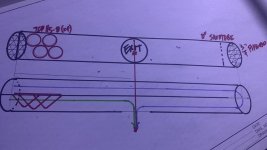 C357B2C5-1DE2-4A53-B015-FC2DD96345BA.jpeg45.4 KB · Views: 65
C357B2C5-1DE2-4A53-B015-FC2DD96345BA.jpeg45.4 KB · Views: 65
So i built this enclosure which sounds great however i 45d the corners to maintain the same dimensions throughout the entire enclosure and used some dowel rod for bracing throughout it. My thing is my frequency response is the not what hornresp showed i would get. If you shifted the graph up 10hz then that would be what i got it. I am trying to figure out how my results didnt come out as planned. I was thinking maybe it was due to a loss of volume when 45ing the corners and with the bracing but im not sure how that could be because if i make the dimensions smaller for the enclosure in boxplan and then move to hornresp it shows me getting an even lower frequency response than what i was going to get with this size. Some how i lost alot of the low low end I was really wanting. Any ideas?






Yeah, don't use 45s in corners - that cuts down the volume of the box, which in turn will reduce its efficiency at low frequencies. Using 45s in the corners will also shorten the path length and raise the box's Fb.
Use of dowels shouldn't make much of a difference, unless you used a LOT of them in your build,
To do a decent comparison between the sim and the build, take an impedance curve of the completed system and compare it to what Hornresp predicts. What you're looking for is that the peaks and dips are in the same locations as predicted by Hornresp.
Finally, that Hornresp model doesn't include the effect of losses, so the output might roll off a bit earlier than suggested by the sim. The better the box is built, the less output will be lost due to losses.
Use of dowels shouldn't make much of a difference, unless you used a LOT of them in your build,
To do a decent comparison between the sim and the build, take an impedance curve of the completed system and compare it to what Hornresp predicts. What you're looking for is that the peaks and dips are in the same locations as predicted by Hornresp.
Finally, that Hornresp model doesn't include the effect of losses, so the output might roll off a bit earlier than suggested by the sim. The better the box is built, the less output will be lost due to losses.
Maybe I’m dumb but how do I take the impedance curve because I’ve just been building these boxes and going off of ear and using burp tones to know what it hits and gets out of it. 🤷♂️ I’ve tried to do research but I’d rather just know from a correct source than to just google some ****. As far as losses it’s a great build it’s my 3rd one and the first one that sounds wonderful, I just under estimated the bracing needed in these style of boxes on the first couple along with some other learning aspects lol
What function if any other than bracing does angle bracing serve? I almost always see that in paraflex enclosures, is it just to support or does it have effect on frequency and sound? I have heard it makes the low end frequencies make it out of the box faster thus reducing delay but I am not sure.
Folks think they direct the air along the path better when all they do is decrease the internal volume of the enclosure.
Check out jbell's SS15 thread. He discusses the situation with measurements.
You can use them, but you have to add that volume back and increases the external size of the enclosure.
Check out jbell's SS15 thread. He discusses the situation with measurements.
You can use them, but you have to add that volume back and increases the external size of the enclosure.
- Home
- Loudspeakers
- Subwoofers
- Spreadsheet for Folded Horn Layouts...